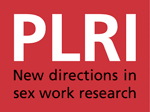Thailand
This research identifies factors that distinguish rural women who have migrated to Bangkok for the purpose of enhancing their economic wellbeing by engaging in the sex industry and those who have stayed in their rural communities and are not engaged in the sex industry. The research used primary data collected through interviews in the red light districts of Bangkok and Pattaya and in villages in rural provinces in Thailand. A total of 100 respondents provided information for the study: 55 percent from the red light districts and the remainder from the provinces. This powerful research is proof that with the

